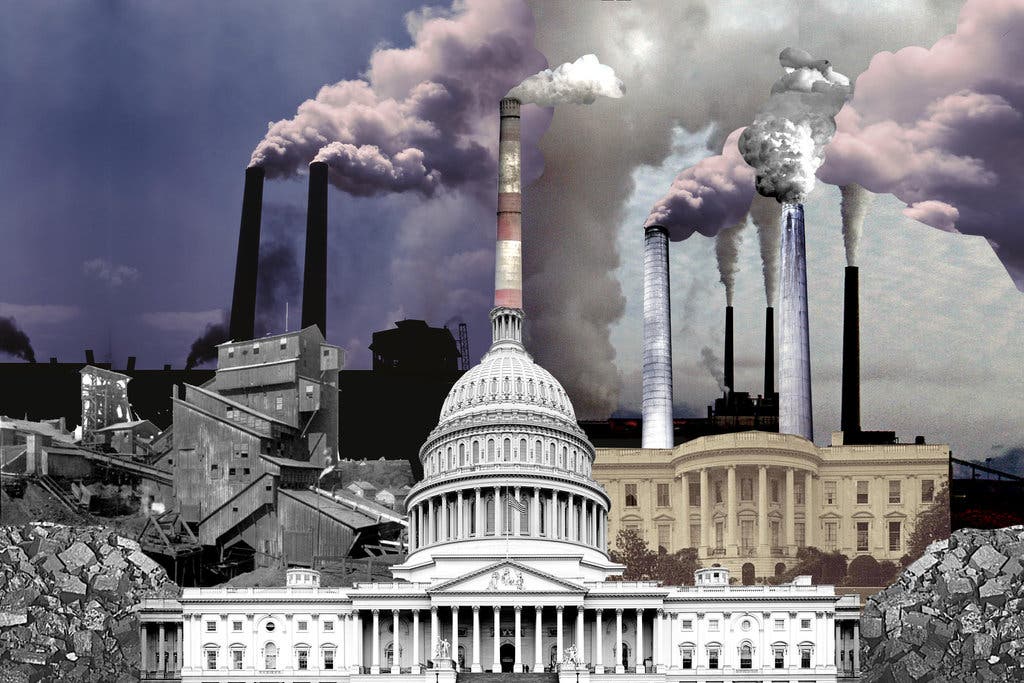Despite Booming Growth, Clean Energy Faces Mounting Opposition

Table of Contents
Economic Concerns Fueling Opposition to Clean Energy Transition
One of the most significant sources of opposition to the clean energy transition stems from economic anxieties. The shift away from fossil fuels threatens jobs in traditional energy industries, leading to concerns about regional economic decline in areas heavily reliant on coal, oil, and gas. This perceived economic disruption fuels resistance, even in the face of the potential for job creation in the renewable energy sector.
The initial investment costs associated with transitioning to clean energy sources also pose a considerable hurdle. Building new renewable energy infrastructure, upgrading the electricity grid, and developing new technologies require substantial upfront capital. This can lead to increased electricity prices in the short-term, raising concerns among consumers and businesses.
- Increased electricity prices in the short-term: While long-term cost savings are projected, the immediate price increases can be politically challenging.
- Potential for regional economic decline in fossil fuel-dependent areas: A just transition strategy is crucial to mitigate job losses and ensure economic diversification.
- Need for government subsidies and their associated controversies: Subsidies can accelerate clean energy adoption, but they often face political opposition due to their cost and perceived unfairness.
- Lack of understanding of long-term economic benefits: A comprehensive public education campaign is needed to highlight the long-term economic advantages of renewable energy, such as reduced healthcare costs due to improved air quality and energy independence.
Environmental Concerns Surrounding Clean Energy Development
Ironically, even the development of clean energy technologies is not without environmental consequences. The manufacturing process for renewable energy technologies, particularly solar panels, requires significant resources and generates waste. The disposal of these panels at the end of their lifespan poses an environmental challenge. Furthermore, the extraction of rare earth minerals essential for many clean energy technologies can have significant environmental impacts.
Large-scale renewable energy projects, such as wind farms and solar farms, also raise land use concerns. The construction of these projects can lead to habitat disruption and visual impacts on landscapes.
- Rare earth mineral mining and its environmental impact: Sustainable mining practices and responsible sourcing are crucial to mitigate these effects.
- Visual impacts of wind turbines and solar farms on landscapes: Careful site selection and design considerations can minimize visual impacts.
- Habitat disruption due to large-scale projects: Minimizing environmental impact through careful planning and environmental assessments is vital.
- Effective mitigation strategies and solutions: Implementing robust environmental impact assessments, employing sustainable manufacturing techniques, and exploring responsible recycling strategies are key to mitigating these concerns.
Political and Regulatory Hurdles Hampering Clean Energy Adoption
Political influence plays a significant role in shaping clean energy policies. Lobbying efforts by fossil fuel interests often result in policies that hinder the growth of renewable energy. Inconsistent or insufficient government regulations also create uncertainty and delay the adoption of clean energy technologies.
Furthermore, bureaucratic processes surrounding permitting and grid integration of renewable energy projects can be lengthy and complex, creating significant hurdles for developers.
- Influence of fossil fuel lobbyists on policy decisions: Increased transparency and campaign finance reform can help to counter this influence.
- Bureaucratic delays in permitting renewable energy projects: Streamlining permitting processes and reducing regulatory burdens is crucial.
- Lack of standardized grid infrastructure for renewable energy integration: Investing in modernizing the electricity grid is essential to facilitate renewable energy integration.
- Political polarization hindering bipartisan support for clean energy: Finding common ground and focusing on the shared benefits of clean energy can help bridge political divides.
Public Perception and Misinformation Campaigns Against Clean Energy
Public perception and understanding of clean energy are crucial for its successful adoption. Unfortunately, misinformation and disinformation campaigns often spread unsubstantiated claims about the dangers and inefficiencies of renewable energy, fueling public skepticism. This lack of awareness regarding the true benefits of clean energy hinders progress.
Social media has become a significant vector for the dissemination of misleading information. Addressing these myths and misconceptions through effective communication and public education campaigns is critical to building public trust and support.
- Social media's role in disseminating misinformation: Fact-checking initiatives and media literacy programs can help combat the spread of misinformation.
- Addressing myths and misconceptions about renewable energy: Clear and accessible information about the benefits and realities of renewable energy is crucial.
- The importance of transparency and clear communication: Openly addressing concerns and providing evidence-based information can foster trust.
- Effective strategies for building public trust and support: Engaging with the public through community outreach programs and collaborative initiatives can foster support for clean energy.
Conclusion: Navigating the Opposition and Ensuring a Sustainable Energy Future
The rapid growth of the clean energy sector is undeniable, yet it faces significant opposition stemming from economic anxieties, environmental concerns, political hurdles, and public misconceptions. Successfully navigating this opposition requires a multifaceted approach that addresses each of these challenges. Addressing economic concerns through just transition strategies, mitigating environmental impacts through sustainable practices, streamlining regulatory processes, and promoting transparent communication are all crucial steps. By fostering public understanding and building trust through comprehensive education campaigns, we can overcome resistance and accelerate the transition to a sustainable energy future.
To learn more about clean energy and how you can contribute to a sustainable energy future, visit [link to relevant organization or resource]. Support policies that promote renewable energy and advocate for responsible clean energy development. Together, we can build a cleaner, healthier, and more prosperous future powered by sustainable energy solutions.

Featured Posts
-
 Southport Stabbing Tweet Leads To Mums Imprisonment And Housing Crisis
May 21, 2025
Southport Stabbing Tweet Leads To Mums Imprisonment And Housing Crisis
May 21, 2025 -
 Abn Amros Bonus System Investigation And Potential Fine
May 21, 2025
Abn Amros Bonus System Investigation And Potential Fine
May 21, 2025 -
 Bbc Antiques Roadshow Leads To Us Couples Arrest In Britain
May 21, 2025
Bbc Antiques Roadshow Leads To Us Couples Arrest In Britain
May 21, 2025 -
 Klopp Veya Ancelotti Kim Daha Iyi Bir Teknik Direktoer
May 21, 2025
Klopp Veya Ancelotti Kim Daha Iyi Bir Teknik Direktoer
May 21, 2025 -
 Abn Amro Zijn Nederlandse Huizen Betaalbaar Reactie Geen Stijl
May 21, 2025
Abn Amro Zijn Nederlandse Huizen Betaalbaar Reactie Geen Stijl
May 21, 2025
Latest Posts
-
 When To Expect Rain Updated Forecast With On Off Predictions
May 21, 2025
When To Expect Rain Updated Forecast With On Off Predictions
May 21, 2025 -
 Big Bear Ai A Prudent Investment Strategy For The Current Market
May 21, 2025
Big Bear Ai A Prudent Investment Strategy For The Current Market
May 21, 2025 -
 Analyzing Reddits Top 12 Ai Stock Recommendations
May 21, 2025
Analyzing Reddits Top 12 Ai Stock Recommendations
May 21, 2025 -
 Big Bear Ai Stock Risks And Rewards For Potential Investors
May 21, 2025
Big Bear Ai Stock Risks And Rewards For Potential Investors
May 21, 2025 -
 12 Promising Ai Stocks Insights From Reddit Investors
May 21, 2025
12 Promising Ai Stocks Insights From Reddit Investors
May 21, 2025
